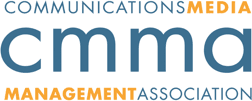Brightcove Honored With Two Technology & Engineering Emmy® Awards
CMMA BlogToday marks an important day in Brightcove’s history. The National Academy of Television Arts and Sciences has recognized Brightcove with two Emmy® Awards for excellence and creativity in technology and engineering! We are proud to join a distinguished group of honorees that have had a material impact on television and video viewing experiences.
For video technologists, an Emmy® is the highest technical achievement award that exists. Only a handful of organizations in the history of television and television arts have been honored with an Emmy®, and for contributions of major importance. We’re talking about the people and companies who invented CCD camera sensors, LCD panels, and even streaming. In that context, it is extremely humbling.
Here at Brightcove, we live and breathe video every day, and we’ve always stood behind our technology and our talented team of engineers, developers, and innovators. This recognition proves what we’ve always known: We are shaping the future of the most powerful means of communication ever invented.
While these Emmy® Awards were given to Brightcove, our customers are the real winners. It is because of them that we reach farther and push harder to extend the boundaries of what’s possible with video. We could accomplish nothing great without their support. So to all of our customers, on behalf of everyone here at Brightcove, thank you.
Now, you may be asking, what exactly did Brightcove win? Let me break it down for you.
Emmy Award #1
Our encoding technology (Brightcove Context-Aware Encoding) won an Emmy® Award in the “Development of Perceptual Metrics for Video Encoding Optimization” category.
For our customers, this patented technology enables dramatic reductions in media distribution costs, such as network-, storage-, and CDN-related costs. It also eliminates guesswork, manual entry of encoding parameters, and any possibility of human error. For audiences, this technology enables the delivery of higher quality video, increasing viewer engagement and satisfaction. You can learn more about this technology here
.
Emmy Award #2
Our transcoding technology won an Emmy® Award in the “Development of Massive Processing Optimized Compression Technologies” category.
This technology is at the core of our Brightcove Video Cloud and Brightcove Zencoder products. Zencoder enables our customers to quickly compress and convert thousands of videos in parallel, with minimum delays and high reliability. Our Video Cloud helps to securely and reliably manage extremely large amounts of video content at scale. In other words, this technology helps our customers save precious time and money. You can learn more about this technology here
.
While we may have won these Emmy® awards in 2021, this recognition has been years in the making. In fact, some of our researchers have been thinking about and working on this technology since the early 1990s. Since the mid-2000s, Brightcove has been pioneering cloud-based transcoding and cloud-based online video platforms as categories of products.
We didn’t need another reason to keep pushing our video technology to new heights, but these awards are certainly motivation to continue to create new innovative technologies for our customers, and to make video encoding and delivery as robust, efficient, and easy to use as possible.
Everyone at Brightcove looks forward to virtually celebrating at the 72nd Annual Technology & Engineering Emmy® Awards ceremony on Sunday, October 10, 2021.
Namita Dhallan leads the product management, engineering, and operations functions at Brightcove. Bringing deep engineering experience and market insight, Namita is responsible for driving Brightcove’s product innovation and delivering world-class video solutions to organizations around the world.
